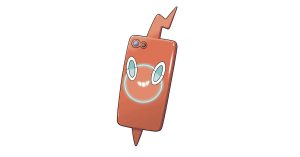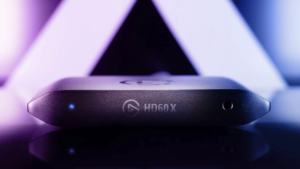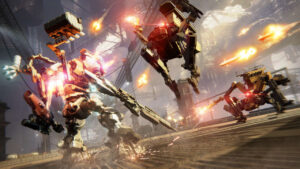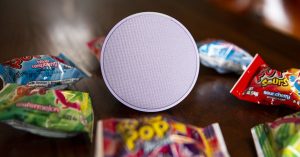Mount and Blade II: Bannerlord PC graphics settings revealed

System Requirements
Optimum 1080p PC Build
Low vs Ultra Screenshots
GPU Performance Chart
CPU List That Meet System Requirements
GPU List That Meet System Requirements
Comments
Mount and Blade 2: Bannerlord
PC Demand
97
Rate this game
User Rating
8.85 user review score. Average score out of 10, based on 111 review scores” style=”background: #4db53c”>
8.85
Ok
Not Ok
Optimisation
7 optimisation score. Average rating, based on 108 user ratings” style=”background: #dddd22″>
7
Mount & Blade II: Bannerlord is finally here, and a day early at that! So we’ve had a look at some of the graphics options available in-game and compiled them in a list below. We’ll be doing some benchmarks soon, so expect our PC Performance Benchmarks and Most Important Graphics Options articles at some point!
It seems that most games these days come with a handy VRAM limit counter, so you can see exactly how much GPU memory usage you are using, and the maximum amount that you can use with your graphics card. There are a bunch of different options available to choose from, so we can easily customise our game’s experience when it comes to performance.
Mount & Blade II: Bannerlord Graphics Options –

Battle Size: 200-1000
Determines the maximum number of units in any given battle. A higher setting will require more CPU and GPU usage.
Overall graphics presets: Very Low, Low, Medium, High, Very High
When increasing the Mount and Blade 2: Bannerlord overall graphics presets, you will see a large increase in VRAM requirements. The base VRAM usage with everything turned to Very Low on the Main Menu is 1639 MB, going up to Very High settings will increase the VRAM usage by 1213 MB (a total of 2852 MB).
With everything turned up to Very High, it is likely that cards with 3GB or higher of VRAM will be able to run this game. The recommended GPU under Bannerlord’s System Requirements is a GeForce GTX 1060 or Radeon RX 580, both of which should be perfectly suitable for running everything at Very High graphics settings.
VRAM requirement:
Very Low: +0 MB (1639 MB)
Low: +163 MB (1802 MB)
Medium: +573 MB (2212 MB)
High: +891 MB (2530 MB)
Very High: +1213 MB (2852 MB)
Shader Quality: Low, Medium, High
Determines how accurate certain graphical effects are, including lighting, hair and fur. Putting the Shadow Quality to one of the lower settings in Bannerlord may make a scene appear to be more flat and dull, with higher settings achieving a more realistic looking image.
In particular, increasing the Shadow Quality will likely improve certain Mount & Blade 2 features like making the textures on horses, armours and weapons seem more realistic. It may also make the scenery look much more dynamic with better lighting in most environments.
Does not require any VRAM.
Texture Streaming Budget: Low, Medium, High, Very High
Texture Streaming Budget will limit the amount of VRAM required to run Mount and Blade 2 by affecting the size/resolution of textures. This option is mostly for lower-end graphics cards which fail to meet even the base setting’s minimum VRAM requirement of 1639 MB.
If your GPU only supports 1 GB of video memory, turning this option to Low may help alleviate performance issues. A higher value will require more VRAM, but will drastically increase performance for cards that can handle it. Though higher options may require more System RAM.
VRAM requirement:
Low: +0 MB (1639 MB)
Medium: +132 MB (1771 MB)
High: +391 MB (2030 MB)
Very High: +781 MB (2420 MB)
Texture Quality: Low Medium, High
Texture Quality is a measure of the game’s graphics, increasing this setting will see textures increase in resolution and quality, but will see a large performance hit as it will affect every texture in-game. Turning this setting up in Bannerlord will see the quality increase across the whole game.
Does not require any VRAM.
Shadow Quality: Low, Medium, High, Very High
Same as Texture Quality, but with shadows specifically. This will affect how fine the shadows are and how much detail are in them. It can also affect the motion of the shadows, as a lower quality may result in a more jagged or stuttered motion.
Increasing this in MB 2: Bannerlord will see higher quality shadows in every environment. Higher quality will mean better immersion, as lower quality shadows can be very distracting.
Requires VRAM dependant on Shadow Type.
Shadow Type: None, Static Only, Static and Dynamic
Determines the type of shadows used. Static objects will not move in an environment and therefore their shadows will not change either. Dynamic shadows are when either a light source moves around an object, or an object moves around in front of a light source.
Dynamic shadows are very computationally expensive, so it will have a larger performance impact than static shadows. Setting this option to Static only may see unrealistic shadows on dynamic objects, like a round circle as a shadow for a horse.
VRAM requirement:
None: +0 MB (1639 MB)
Static Only: +8 MB (1647 MB)
Static and Dynamic: +12 MB (1651 MB)
Shadow Filtering: Off, PCF
Mount and Blade 2 has a graphics option under Shadow Filtering called PCF. This stands for Percentage Closer Filtering and it is the process of blurring shadows in order to reduce aliasing on the shadow’s edges. The lower the shadow quality, the more noticeable the jagged edges will be.
Increasing this option will blur the edges of shadows to make them look less pixelated.
Does not require any VRAM.
Particle Detail: Low, Medium, High
Affects the detail of particles in Bannerlord like resolution and amount. Increasing this option will provide higher detailed particles for a more realistic image. Particles can include sparks, fire and dirt being kicked up from horses.
Does not require any VRAM.
Particle Quality: Low, Medium, High
Increases the sharpness of particles, a lower setting will blur particles in Mount and Blade II, whilst a higher setting will make them much more clear. If you are experiencing performance issues mid combat, lowering this setting may help.
Does not require any VRAM.
Foliage Quality: Very Low, Low, Medium, High, Very High
Affects the quality of foliage in Mount and Blade 2: Bannerlord. A higher setting results in more abundant and higher detailed foliage in the environment.
Does not require any VRAM.
Character Detail: Very Low, Low, Medium, High, Very High
An overall setting for the detail of character models. Higher settings mean higher quality, like resolution, animations etc.
Since Mount and Blade deals with large groups of characters at times, turning this setting up will result in more realistic-looking characters. Lower settings can make them seem more stiff, lifeless and doll-like.
Does not require any VRAM.
Environment Detail: Very Low, Low, Medium, High, Very High
Sets the details for certain environmental props. Increasing this etting will see improvements to quality with objects in the environment, such as pots and tools in villages, and other environmental details in the world.
Increasing this setting in Bannerlord Mount and Blade 2 will see a large performance hit especially in areas with a high density of props and objects.
Does not require any VRAM.
Terrain Quality: Low, Medium, High
Adjusts the quality and detail of the terrain in Mount & Blade II. Increasing it will improve the terrain’s resolution, as well as adding depth through improved meshes. May affect game performance as it will adjust all terrain.
Does not require any VRAM.
Number of Ragdolls: 0, 1, 3, 5, 10, unlimited
Sets the maximum number of realistic ragdoll simulations allowed simultaneously at any one time. Turning this setting to 0 means no characters can perform a realistic ragdoll simulation, whilst unlimited will allow any number of characters and objects to ragdoll at any given moment in Mount & Blade 2.
Does not require any VRAM.
Occlusion Method: None, TSAO
Occlusion Method adjusts the Ambient Occlusion technique used. Ambient Occlusion is a simulation of the obstruction of ambient light on certain objects, such as corners. Turning this setting up will increase the realism of objects and scenes in Bannerlord.
For more details on Ambient Occlusion, check out our Graphics Settings Explained guide.
Does not require any VRAM.
Texture Filtering: Bilinear, Trilinear, Anisotropic 2X, Anisotropic 4X, Anisotropic 8X, Anisotropic 16X
Texture filtering affects the detail and quality of textures when viewed at certain angles. Lower settings will blur textures, whilst higher settings will retain sharpness and detail.
For more details on Texture Filtering, check out our Graphics Settings Explained guide.
Does not require any VRAM.
Water Quality: Low, Medium, High
Sets the Water quality. A higher value means a more detailed water simulation.
Does not require any VRAM.
Anti-Aliasing: None, FXAA, SMAA, SMAA x2, Temporal SMAA, Temporal SMAA x2
Sets the Anti-Aliasing technique.
VRAM requirement:
None: +0 MB (1639 MB)
FXAA: +35 MB (1674 MB)
SMAA: +63 MB (1702 MB)
SMAA x2: +91 MB (1730 MB)
Temporal SMAA: +109 MB (1748 MB)
Temporal SMAA x2: -14 MB (1625 MB)
Lighting Quality: Low, Medium, High
Sets the Lighting Quality.
VRAM requirement:
Low: +0 MB (1639 MB)
Medium: +78 MB (1717 MB)
High: +92 MB (1731 MB)
Decal Quality: Very Low, Low, Medium, High, Very High
Sets the Decal Quality.
For more details on Decal Quality, check out our Graphics Settings Explained guide.
Does not require any VRAM.
Depth of field: On, Off
VRAM requirement:
Off: +0 MB (1639 MB)
On: +56 MB (1695 MB)
Screen Space Reflection: On, Off
VRAM requirement:
Off: +0 MB (1639 MB)
On: +21 MB (1660 MB)
Cloth Simulation: On, Off
VRAM requirement:
Off: +0 MB (1639 MB)
On: +64 MB (1703 MB)
Interactive Grass: On, Off
Does not require any VRAM.
Sun Shafts: On, Off
VRAM requirement:
Off: +0 MB (1639 MB)
On: +3 MB (1642 MB)
Subsurface Scattering: On, Off
VRAM requirement:
Off: +0 MB (1639 MB)
On: +31 MB (1670 MB)
Tessellation: On, Off
Does not require any VRAM.
Bloom: On, Off
VRAM requirement:
Off: +0 MB (1639 MB)
On: +42 MB (1681 MB)
Film Grain: On, Off
Does not require any VRAM.
Motion Blur: On, Off
VRAM requirement:
Off: +0 MB (1639 MB)
On: +31 MB (1670 MB)
————–
So now you know what you’ll be getting yourself into when launching M&B II: Bannerlord today. You can check out how each graphics option above fares in terms of performance in our M&B 2: Bannerlord Most Important Graphics Options article, when it’s released. You can also see how well different graphics cards and rigs performed in our MB2 Bannerlord Performance Benchmarks article, also when it’s released. The game is out today, so hopefully you’ll have some idea of how well it will run on your system by the time you launch it.







